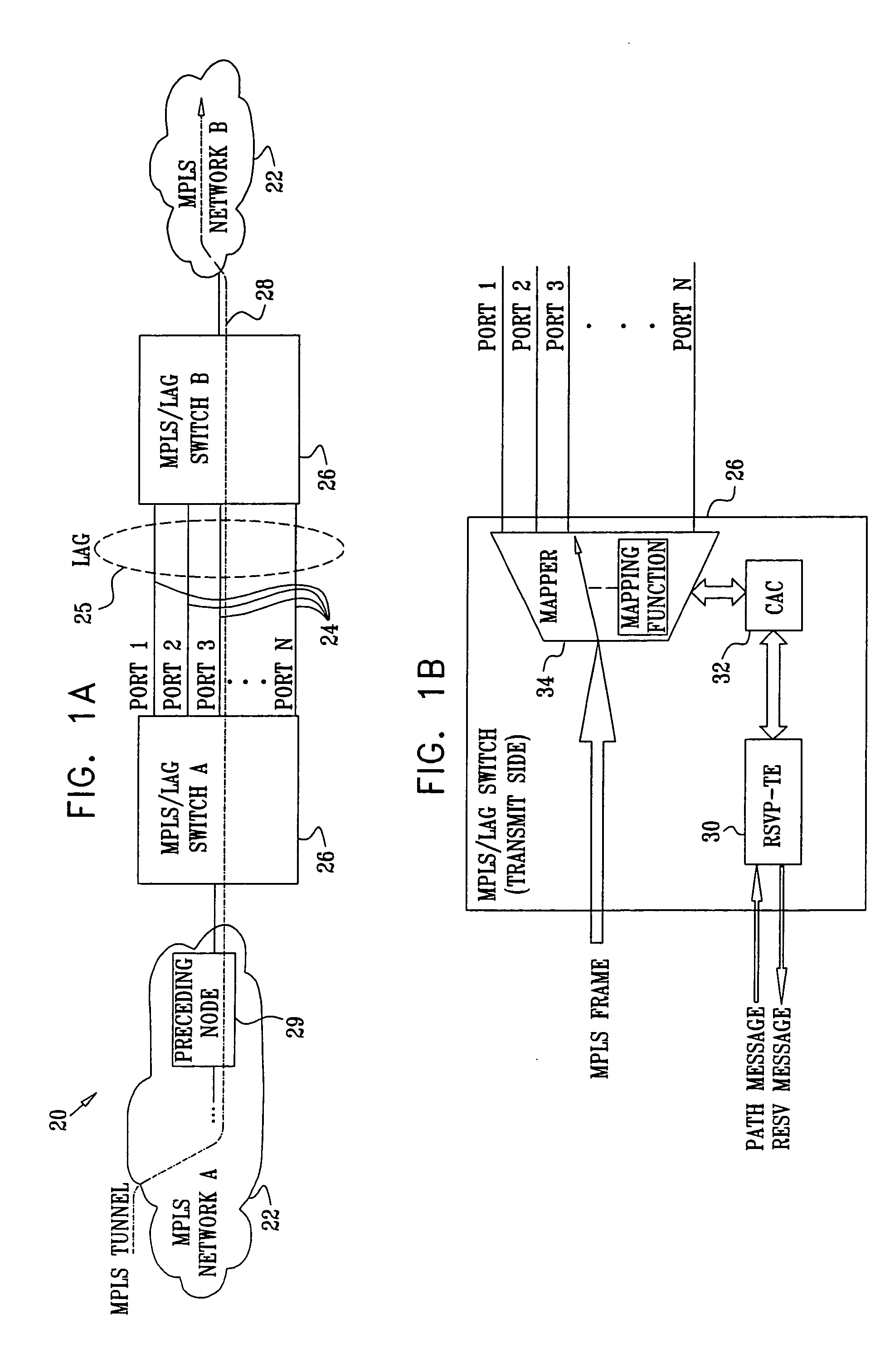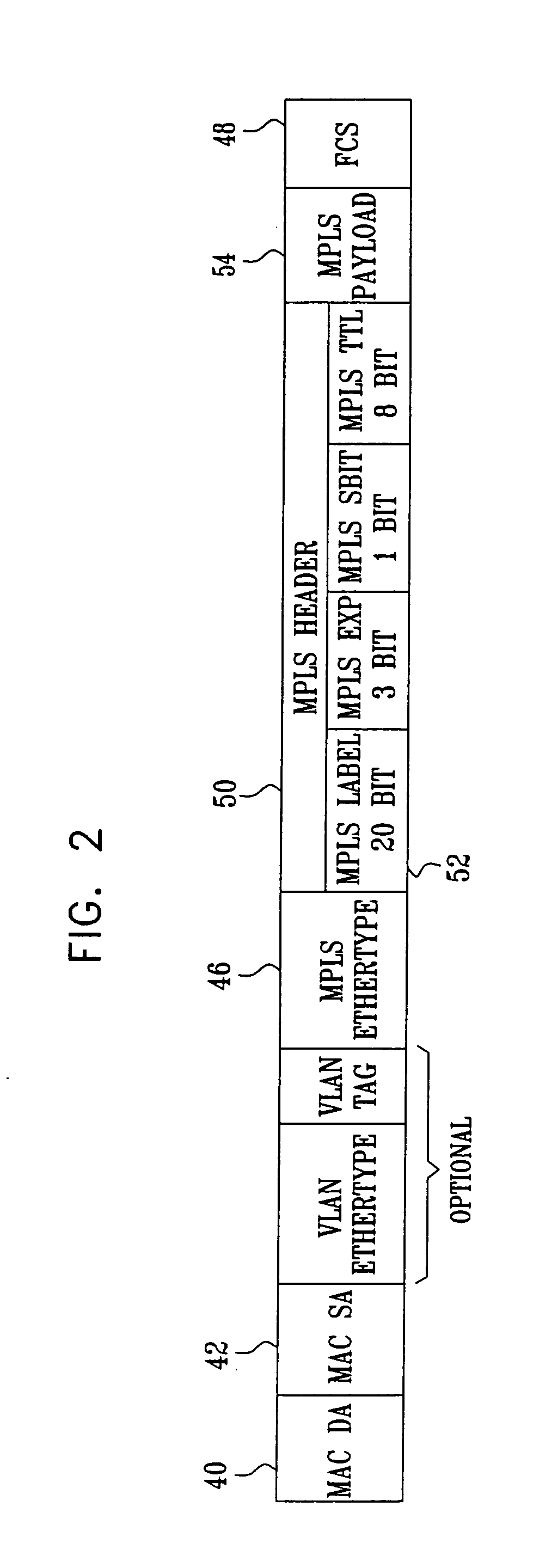Tunnel provisioning with link aggregation
a tunneling and link technology, applied in the field of communication networks, can solve the problems of poor service quality and the inability of the link aggregation process to guarantee bandwidth
- Summary
- Abstract
- Description
- Claims
- Application Information
AI Technical Summary
Benefits of technology
Problems solved by technology
Method used
Image
Examples
Embodiment Construction
[0038]FIG. 1A is a block diagram that schematically illustrates a computer communication network 20, in accordance with an embodiment of the present invention. System 20 comprises two MPLS networks 22, labeled A and B, i.e., networks containing MPLS-capable switches. (Typically, these networks may also carry non-MPLS traffic, as in MPLS-capable IP networks that are known in the art.) MPLS networks A and B are connected via MPLS / LAG switches 26, using N physical Ethernet ports 24. Ports 24 are aggregated into a LAG group 25 using link aggregation (LAG) methods defined in the IEEE 802.3ad specification cited above. The two MPLS / LAG switches 26, which also function as LSRs, perform link aggregation and other packet routing / switching functions, according to methods which will be described below.
[0039] An MPLS tunnel 28 (a label switched path, or LSP, according to the MPLS specification cited above) is established from an ingress node in MPLS network A, through the two switches and the ...
PUM
 Login to View More
Login to View More Abstract
Description
Claims
Application Information
 Login to View More
Login to View More - R&D
- Intellectual Property
- Life Sciences
- Materials
- Tech Scout
- Unparalleled Data Quality
- Higher Quality Content
- 60% Fewer Hallucinations
Browse by: Latest US Patents, China's latest patents, Technical Efficacy Thesaurus, Application Domain, Technology Topic, Popular Technical Reports.
© 2025 PatSnap. All rights reserved.Legal|Privacy policy|Modern Slavery Act Transparency Statement|Sitemap|About US| Contact US: help@patsnap.com



